
Juan Rodriguez-Torrent |
|
Optical "accuracy"
|
|
|
|
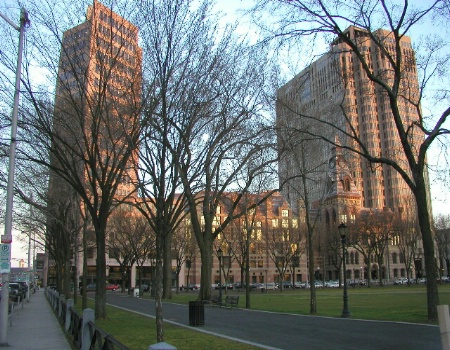
Buildings
New Heaven
Juan Rodriguez-Torrent |
|
|
|
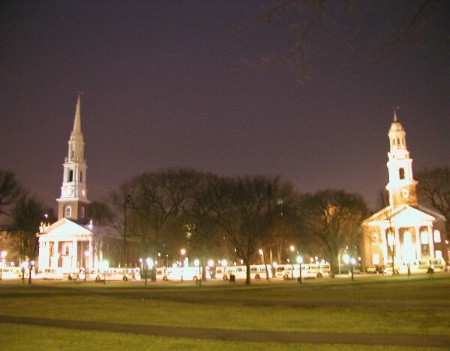
Steeples
Yale green
Juan Rodriguez-Torrent |
|
|
|
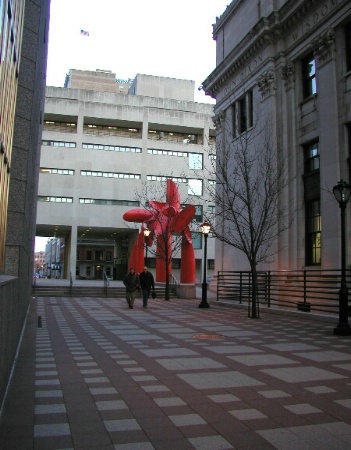
Art
Sinking building
Juan Rodriguez-Torrent |
|
|
|
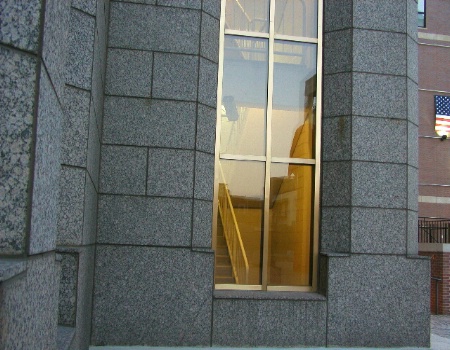
corner
Fleet Bldg
Juan Rodriguez-Torrent |
|
|
|
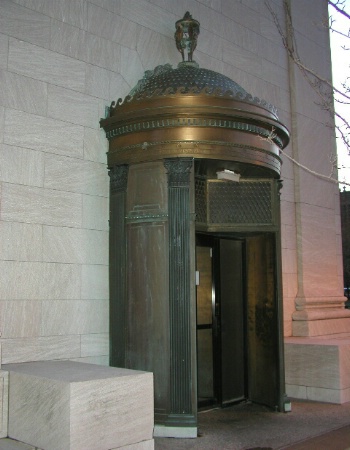
Door
NH Court House
Juan Rodriguez-Torrent |
|
|
|
After using my Olympus C4040 for a month I feel like I bought a very expensive dog. Of course there is the possibility that I got a lemon, the digital technology is lacking or that I'm such a bad fotographer that with everything in auto ... I manage to screw it up! I’m seeking your help to decide if I should send the camera to the manufacturer for repair or for a refund. Since most of you already have digital cameras your comments will be most appreciated. Thank you in advance for your time and help.Most of the pictures I have taken look like I’m using a half of a fish eye. In these two pictures (http://www.southbury.org/oddcam/buildings.jpg http://www.southbury.org/oddcam/steeples.jpg) both buildings are supposed to be parallel and straight up. Could you please let me know if that’s what’s expected of an (allegedly) decent quality digital camera?
In this picture (http://www.southbury.org/oddcam/art.jpg)the building at the end of the alley behind the monument (the one that looks like the sinking Titanic) and the wall on the left of the frame are both perfectly engineered and should look, more or less, as the building on the right of the frame. By the way the tiled lines on the ground are (on the wild J of course) perfectly straight!
I took this picture (http://www.southbury.org/oddcam/corner.jpg) aligning the bottom of the frame to the bottom of the wall and lined the outside corner with the right side of the shot (looks squared to me). Is the left corner as one might expect? I centered this door (http://www.southbury.org/oddcam/door.jpg) in the frame to see how the corner of the building and the blocks would show on the picture. I just can’t believe the results. Again, thank you for your time and effort. Juan
March 31, 2002
|
John A. Lind |
|
|
|
|
|
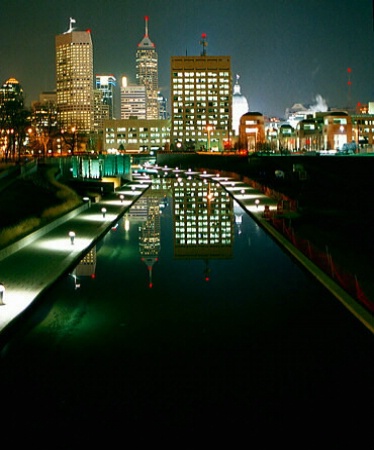
Indianapolis Canal Walk by Night
Shift lens shifted downward to move horizon upward and capture more of canal leading to buildings
John A. Lind |
|
|
|
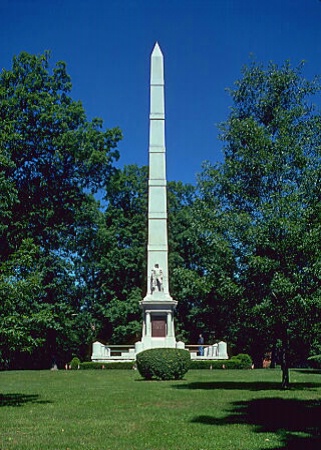
Battle at Tippecanoe Creek, November 1811
Shift lens shifted upward to move horizon downward and capture all of the 80 foot tall monument
John A. Lind |
|
|
|
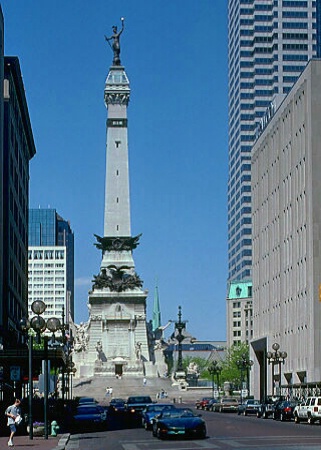
Circle Monument
Shift lens shifted upward and to the right to capture all of monument and eliminate sidewalk clutter on the left
John A. Lind |
|
|
|
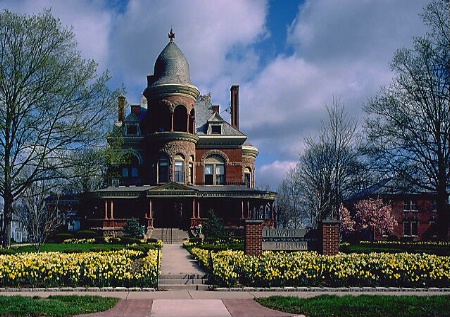
Seiberling in Spring
Shift lens aimed directly down the front walk, then shifted upward to eliminate the street, then to the right slightly to eliminate suburban clutter on the left
John A. Lind |
|
|
|
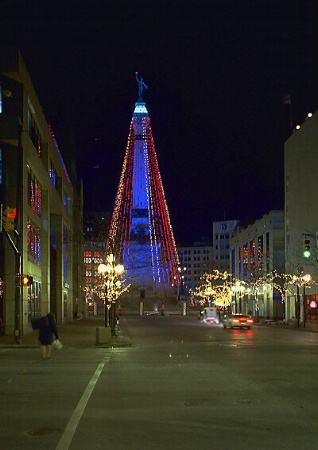
Monumental Christmas
Lens aimed directly down row of street lights, then shifted upward to capture all of mounument, then shifted slightly to the right to eliminate urban clutter on the left
John A. Lind |
|
|
|
Juan,
There may be two effects confounded with each other. The first is perspective with how you aimed the camera. The second is *possible* barrel distortion in the lens (I've emphasized possible). It's hard to tell from your photographs whether there's barrel distortion as I'm certain about the first effect.Perspective Issues:
This definitely shows in your "Buildings" (New Haven), "Steeples" (Yale Green) and "Art" (Sinking Building) photographs. I can tell you aimed upward at the buildings by placement of the "horizon line" where the ground meets that building(s) near the bottom of the photograph. By aiming upward at the buildings the film plane (with digital it's the CCD plane) is no longer parallel to the vertical lines of the buildings. With all rectilinear lenses (nearly all lenses are rectilinear), parallel lines that are not parallel to the film plane will converge for the same reason more distant objects appear smaller than closer ones do. Imagine a CCD plane the same size as the front of the building. In this case, you've made the tops of the buildings farther from this extended film plane than the bottoms of the buildings. It's why they appear to be farther and smaller than the bottom. Furthermore, the tops of the buildings and the tops of the steeples will also converge and it's why they appear to lean in toward each other. If you aim at these buildings "dead level" instead of aiming upward, the vertical lines in them should become parallel again. This is a particular problem with buildings that are very tall compared to their width. Your "Art" photograph is particularly problematic with numerous prominent, flat, horizontal and vertical surfaces and the camera's CCD plane is not parallel to any one of them. The tops of the buildings on your immediate left and right converge for the same reasons they do in the other two. I had to look at the "corner" (Fleet Bldg) photograph for some time. It appears as if you not only aimed upward slightly, but also turned to the right and then aligned the base of the building parallel to the bottom edge of the image . . . resulting in the seeming tilt to the right from not only converging vertical lines but converging horizontal ones also. The "secret weapon" of professional architectural photographers is the "shift lens." Sometimes it's also called a PC lens (PC = perspective correction). Instead of aiming upward, the camera and lens is aimed dead level. In these cases, the lens would be shifted upward on its lens mount to move the center of the image upward while moving the horizon line downward. These lenses are specialized and comparatively very expensive because of their design and shift mechanism. Even the very least expensive of them *used* for a 35mm camera is in the $400-$500 range. New, they're easily well over $1,000 with some over $2,000. Unfortunately, I do not know of any digital that has a shift lens specifically designed for it, unless it's one of the very high end, very expensive ones that uses 35mm film camera lenses. Without a shift lens, the alternative is finding a vantage point from which aiming dead level includes everything you want in the photograph, then cropping out the undesired portion from the result. This will affect resolution of your final image and how much enlargement is possible (as it does with film cameras also). Barrel Distortion Issues:
I suspect you may have some very slight barrel distortion and that it's more prominent when the zoom lens is at its shortest focal length (widest angle). It's only a suspicion because the overwhelming problems with these photographs is due to perspective and tilting the camera upward. As an aside, I have been disappointed with consumer digital camera lenses, especially the less expensive ones. Nearly all exhibit some barrel and/or pincushion distortion depending on camera and zoom length. The lens on some of the worst offenders is almost an afterthought with all the design effort poured into the electronics and little into the optics. I've attached some images made with a shift lens so you can see what they look like. Camera is aimed dead level and straight at flat surfaces in which both horizontal and vertical lines are desired to remain parallel (i.e. camera is not turned or tilted). The lens is then shifted to compose the image. You will note that it does not eliminate the feeling of looking upward at something; it cannot do that. It does keep things from looking like they are falling backward or toward each other from the edges. -- John
March 31, 2002
|